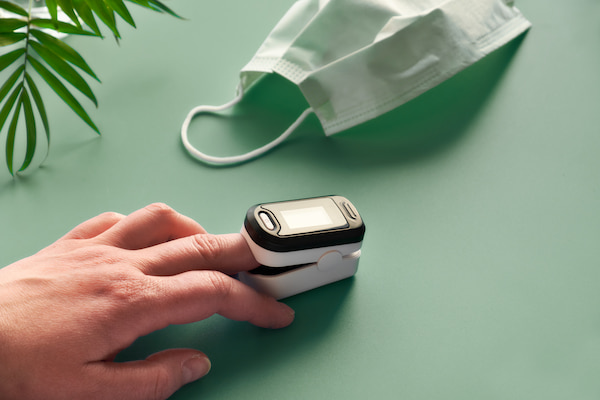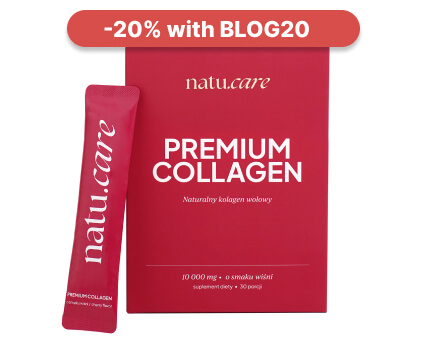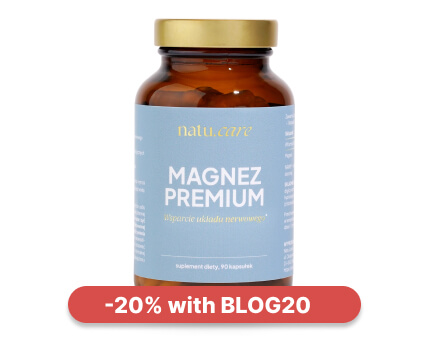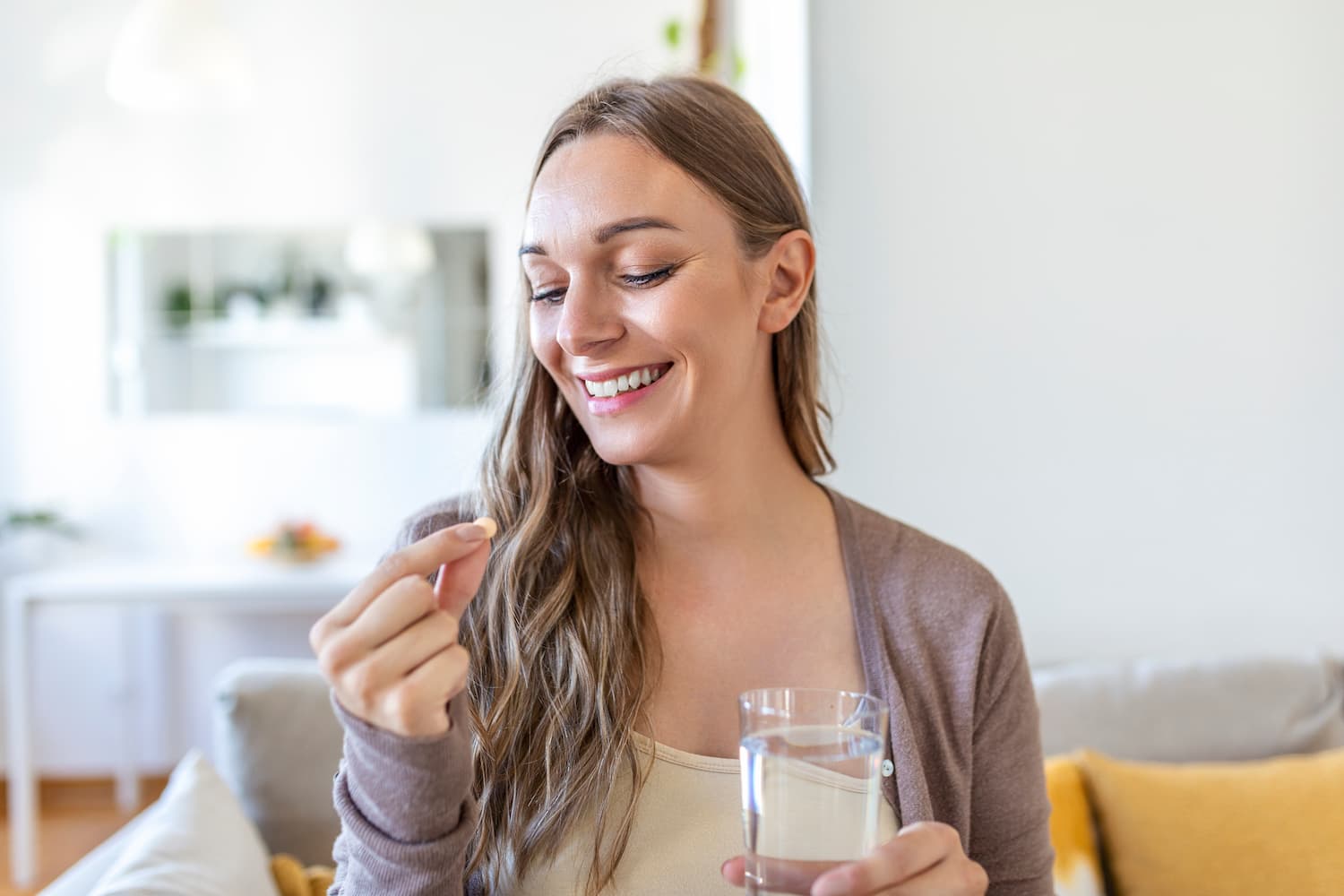Oxygen saturation - what is it? Norms, testing, symptoms of low saturation
Saturation is one of the most important vital signs and its correct state is crucial for health.


Learn more about our editorial process
.

Learn more about our editorial process
.

Learn more about our editorial process
.
Why you can trust us
Articles on Natu.Care are written based on scientific research, data from government websites and other reliable sources. The texts are written in cooperation with doctors, nutritionists and other health and beauty experts. Articles are reviewed before publication and during significant updates.
.Learn more about our editorial process
.Information about advertisements
Content on Natu.Care may contain links to products from the sale of which we may receive a commission. When creating content, we adhere to high editorial standards and take care to be objective about the products discussed. The presence of affiliate links is not dictated by our partners, and we select the products we review ourselves completely independently.
.Learn more about our terms and Conditions
.Saturation determines the level of oxygen saturation in the blood, which is crucial for the proper functioning of our body.
Saturation is falling! - we have heard this phrase in more than one medical series. Since the beginning of the COVID-19 pandemic, this term has been used more frequently, not only among the series' doctors, but also by our friends and loved ones.
From this article you will learn:
- What is carbonation? .
- What are its standards? .
- What should cause you concern? .

Sprawdź, za co pokochały go tysiące klientek Natu.Care Premium Omega-3ᵀᴳ -15% z kodem BLOG15
Natu.Care Omega-3ᵀᴳ Premium
Natu.Care Omega-3ᵀᴳ Premium dla zdrowia serca, mózgu i odporności. Najlepsza przyswajalność. Optymalna dawka 750 mg. Przebadana przez niezależne laboratorium.
Zobacz więcej
Produkt ma super skład, transparentną etykietę i co dla mnie jest ważne – małe kapsułki do połknięcia. Nie ma też nieprzyjemnego efektu odbijania rybą, który miałam spożywając inne produkty. Widzę znaczną poprawę odporności. Polecam!@Kasia P.
See also articles on health:
.- Pulse oximeter
- Blood tests
- Thyroid tests
- Cortisol testing
- Cervical cancer
- Liver .
- Thyroid
- Anemia
- Fatty (oily) liver
- Hepatic tests .
- Blood donation
- How to take care of your mental health .
Blood saturation - what is it?
.Blood saturation is one of the most importantand vital parameters, along with blood pressure, respiratory rate and body temperature. Saturation determines the oxygen saturation of the blood , i.e. it indicates whether our body is adequately oxygenated.
Hemoglobin is responsible for transporting oxygen to the various tissues and organs in the body. A blood saturation test indicates how much haemoglobin is currently connected to oxygen.
Saturation status is given as a percentage and is designated by the symbol SpO2 or SaO2. A saturation of 98% means that the body is functioning properly and 98% of the haemoglobin is delivering oxygen to the body's cells at any given time.
Why is saturation measured?
.I asked Dr Witold Tomaszewski, M.D., what the purpose of testing saturation status is.
.As he explains, the purpose of the test is to check whether the blood is well oxygenated. Doctors can use pulse oximeters to monitor the health of people with ailments that affect the oxygen content of the blood, such as:
- chronic obstructive pulmonary disease, .
- asthma, .
- pneumonia,
- pneumonia,
- pneumonia
- pulmonary neoplasms,
- pneumonia,
- anemia,
- pneumonia,
- pneumonia
- anemia, .
- heart attack or heart failure,
- infarction or heart failure
- congenital heart disease, .
According to Dr. Tomaszewski, saturation testing is indicated to:
.- monitor oxygen content during or after surgical procedures requiring sedation (e.g. anaesthesia), .
- diagnose sleep apnoea, .
- assess whether there is a need for mechanical ventilation with a ventilator, .
- determine whether supplementary oxygen therapy is needed, .
- assess the person's ability to tolerate increased physical activity, .
Hypoxaemia and hypoxia
.When discussing the topic of desaturation, the terms hypoxaemia and hypoxia often come up and are associated with hypoxia. Are they the same and can they be used interchangeably? No.
- Hypoxaemia (colloquially hypoxia) refers to a reduced oxygenand in arterial blood, which severely disrupts metabolic processes in the body's tissues.
- Hypoxia refers to a chronic deficiency of oxygenand in the tissues relative to the demand, leading to hypoxia in the body.
In brief
Hypoxaemia is a reduction in the concentration of oxygen in the blood, while hypoxia is the consequence of long-lasting hypoxaemia.
Natu.Care Collagen Premium 5000 mg, mango & passion fruit

- Collagen content: 5000 mg marine collagen hydrolysate
- Additional active ingredients: vitamin C, low molecular weight hyaluronic acid (and L-theanine and coenzyme Q10 in cocoa flavoured collagen or vitamin A and vitamin E in mango–passion fruit flavoured collagen)
- Form: powder sachets
- Dose: 1 sachet per day
- Sufficient for: 30 days
Product description
Fish collagen from the Natu.Care brand in a dose of 5000 mg, based on certified ingredients of the best quality. Regular supplementation will positively influence the appearance of the skinóry, hairów and nails – they will be rebuilt and strengthened from the inside.
In addition to collagen, which is valuable for health and beauty, it also offers other active ingredients that help to maintain a youthful complexion, shiny hair and strong nails.
The formula contains a sufficient portion of the active ingredient to positively affect joints, the musculoskeletal system and immunity.
Natu.Care Premium Collagen is available in two flavours – Cacao Bloom and Rise&Shine. Both formulas are based on the following active ingredients: marine collagen hydrolysate, wild roseóbud extract and hyaluronic acid.
Additionally, Cacao Bloom contains natural L-theanine, coenzyme Q10 and defatted Dutch cacao. Rise&Shine instead contains vitamin E and vitamin A.
These are the best collagens in the world.
These best fish collagens on the market also rós taste – Cacao Bloom is a treat for chocolate lovers. Rise&Shine will appeal to those whoólike the refreshing taste of mangoófruit and passion fruit.
Pros and cons
Pros:
- Vitamin C supports the body's collagen production, enhancing its effectiveness.
- An effective dose of hyaluronic acid, which additionally supports skin hydration and joint health.
- Fish collagen absorbs 50% better. Additionally, the manufacturer specifies the fish species it is sourced from (Atlantic cod).
- The composition has been tested by the independent and accredited J.S. Hamilton laboratory.
- MSC (Marine Stewardship Council) quality certification, which confirms that the collagen source supports sustainable fishing practices.
Cons:
- None.
Additional information
Natu.Care's fish collagen receives praise for its delicious taste. You won't find the fishy aftertaste that often comes through in other collagens. Plus, you have two tasty flavors to choose from: cocoa and mango-passionfruit.
Active ingredients like coenzyme Q10, hyaluronic acid, and natural L-theanine provide anti-inflammatory and antioxidant benefits while slowing down aging processes.
User review
Super, after about 6 weeks of use, the skin on my face became noticeably firmer. Wonderful taste.
Ania ZalewskaNatu.Care customer
Natu.Care Premium collagen 10 000 mg, mango-maracuja

- Collagen content: 10,000 mg marine collagen hydrolysate
- Additional active ingredients: vitamin C, low molecular weight hyaluronic acid (and L-theanine and coenzyme Q10 in cocoa flavoured collagen or vitamin A and vitamin E in mango–passion fruit flavoured collagen)
- Form: powder sachets
- Dose: 1 sachet per day
- Sufficient for: 30 days
Product description
One of the strongest collagens on the market, whichós provides as much as 10,000 mg in a daily serving. This allows the formula to effectively support the condition of the skin, hair and nails.
With this supplement, you will support your beauty, which will allow you to visually stop the ageing process and feel a second youth!
Natu.Care Collagen Premium 10 000 mg comes in two flavours – cherry and mango-maracuja. Both formulas have the same product backbone – collagen, hyaluronic acid and vitamin C.
In the cherry version you additionally find glucosamine, chondroitin and Indian frankincense resin extract. Mango-maracuja, on the other hand, contains vitamin E and vitamin A.
Pros and cons
Pros:
- Tested collagen formula – SeaGarden, whose effects have been confirmed in clinical studies.
- Effective dose of hyaluronic acid, additionally moisturizing the skin and positively impacting joint health.
- Vitamin C supports the body’s natural collagen production.
- The composition has been tested by the independent and accredited J.S. Hamilton laboratory.
- The product has an MSC (Marine Stewardship Council) quality certification – the collagen source supports sustainable fishing practices.
Cons:
- None.
Additional information
Users praise Natu.Care Collagen Premium for the easy dissolvability of the powder.
User review
I noticed a significant improvement in my skin texture after a few weeks of taking collagen regularly. My complexion is now as soft as velvet!
Natu.Care Collagen Premium 10000 mg, cherry

- Collagen content: 10,000 mg of hydrolyzed bovine collagen
- Additional active ingredients: vitamin C, low molecular weight hyaluronic acid, glucosamine, chondroitin, extract of Indian frankincense resin (boswellia serrata)
- Form: powder sachets for drinking
- Serving: 1 sachet per day
- Lasts for: 30 days
Product description
One of the strongest collagens on the market, providing as much as 10,000 mg per daily serving. This product can effectively support the condition of joints, skin, hair, and nails.
With this supplement, you will support your skeletal and joint system as well as your beauty, helping you visually halt the aging process and feel rejuvenated!
Pros and cons
Pros:
- The daily portion of collagen is very large – as much as 10,000 mg.
- Proven collagen formula – COLLinstant, whose effectiveness has been confirmed in clinical studies.
- Effective dose of hyaluronic acid, which additionally moisturizes the skin and positively affects joint health.
- Vitamin C supports the body's natural collagen production.
- Glucosamine is a fundamental building block of compounds found in joint cartilage and a component of collagen that gives elasticity to connective tissue in tendons.
- Chondroitin is a natural component found in the human body, mainly in cartilage. This large molecule (mucopolysaccharide) has the ability to absorb water, which helps maintain the elasticity and resilience of cartilage.
- Frankincense resin extract supports blood circulation and joint mobility and reduces their stiffness. It may help alleviate inflammatory conditions.
- The composition has been tested by the independent and accredited J.S. Hamilton laboratory.
Cons:
- None.
Additional information
Users praise Natu.Care Collagen Premium for the easy dissolving of the powder.
Premium Sodium Butyrate
Product description
Premium Sodium Butyrate is a natural support for your digestive system. With a high dose of butyric acid (940 mg), it supports the regeneration of the intestinal mucosa, improving gut health and function, and aids in the absorption of nutrients. By taking care of your intestines, you're taking care of the health of your entire body.
Studies involving people suffering from irritable bowel syndrome confirm that sodium butyrate is ideal for supporting issues related to bacterial flora imbalances (for example, after antibiotic therapy), constipation and diarrhea, inflammation of the intestinal mucosa, or a diet low in fiber.
Premium Sodium Butyrate capsules are made using the innovative DRcaps® technology. This guarantees that the active ingredients in the product are protected from the destructive effects of stomach acids and digestive enzymes. As a result, we can be sure that the beneficial ingredients are released in the small intestine and are fully absorbed by our body.
Premium Sodium Butyrate from Natu Care is 100% tested, and its composition contains only the highest quality raw materials.
Pros and cons
Pros:
- Supports digestive system function
- Helpful for various gastrointestinal conditions, including IBS
- High dose of butyric acid in each capsule
- Eco-friendly, clean, and tested composition
- Free from added sugar, gluten, GMOs, and lactose
- Innovative capsule technology - DRcaps
Cons:
- None
Additional Information
Take 3 capsules daily at any time of the day, preferably with a meal. Swallow the capsules whole with water.
Premium Sodium Butyrate is intended for adults.
The product should be used under medical supervision.
User review
I've been using the product for 2 weeks. My stomach feels lighter, and my digestion has improved. I recommend it.
Natu.Care Premium Magnesium + Vitamin B6

- Magnesium content per day: 305 mg
- Additional active ingredients: Vitamin B6 (2.1 mg)
- Form: capsules
- Serving size: 3 capsules per day
- Sufficient for: 30 days
Product description
The Premium Magnesium + Vitamin B6 dietary supplement is a comprehensive product that combines three organic forms of magnesium (citrate, malate, and diglycinate) and vitamin B6 in highly absorbable forms.
Magnesium is an essential mineral without which our bodies cannot function properly. It supports the immune, nervous, and muscular systems, maintains electrolyte balance, and is involved in cell division and the regulation of mental functions.
Research shows that magnesium supplementation is even more effective when accompanied by vitamin B6, which is included in our product. Vitamin B6 is responsible for the proper functioning of the nervous and immune systems, as well as the proper functioning of the heart.
If you want to safely get rid of feelings of fatigue, concentration problems, hair loss, muscle cramps, trembling, or irritability, reach for Premium Magnesium from Natu.Care, tested by the independent, certified laboratory J.S. Hamilton Poland.
Pros and cons
Pros
- Supports the proper functioning of the nervous and immune systems.
- Reduces feelings of fatigue and tiredness.
- Maintains proper psychological functions.
- The purity of the ingredients (free from anti-caking agents, artificial fillers, and additives such as titanium dioxide, microcrystalline cellulose, talc, magnesium stearate, and silicon dioxide) has been confirmed by laboratory tests.
- High absorption of ingredients.
- Soft capsules that are easy to swallow.
- Suitable for vegetarians and vegans.
Cons
- None.
Additional information
Take with a meal, 3 capsules per day.
The capsules should be taken with at least 250 ml of water.
If you have trouble sleeping, it is advisable to take 1 capsule in the morning and 2 capsules in the evening, no later than 4 hours before bedtime.
Avoid combining with products high in calcium (milk, yogurt, cheese), as this may negatively affect magnesium absorption.
Pregnant and breastfeeding women should consult a doctor before starting supplementation.
User review
I’m very impressed with the speed of delivery. The product itself is of high quality and absorbs well. After two weeks of supplementation, I’ve noticed a significant improvement in muscle recovery, especially during periods of intense training. I highly recommend it!
Product description
The dietary supplement contains omega-3ᵀᴳ, or omega-3 acids in the form of trójglyceridesów. Scientific studies suggest that this form of fatty acidsós up to 2 times better absorbed than the estersós present in many dietary supplements on the market. This means that you are assured of their effectiveness and of supplying yourself with valuable omega acids.
Fatty acids omega-3 are derived from wild anchovy oil. It is a rich source of healthy fats that are essential for the health of the cardiovascular, immune and nervous systems, as well as the proper function of vision, joints muscles.
Scientific research suggests that wild anchovies are a good source of healthy fats.
Scientific research also suggests that an adequate intake of omega-3 fatty acidsós protects against and supports the treatment of depression and anxiety disorders. In addition, omega-3s influence the hydration and appearance of the skinóry and support healthy sleep.
.
The formula contains a total of 750 mg of EPA+DHA acidsós, which is three times higher than the recommended minimum of 250 mg for the Polish population. Omega-3 TG Premium has studies indicating that its TOTOX is 9, which is a very good result.
Supplementation of omega-3 fatty acidsóis recommended for anyone who does not eat 1–2 portions (approximately 300 g) of oily fish per week. Children during growth, seniors, physically active people, vegans and vegetarians, as well as patients undergoing cardiovascular treatment and prevention of heart disease also have an increased need.
Pros and cons
The dietary supplement contains omega-3ᵀᴳ, or omega-3 acids in the form of trójglyceridesów. Scientific studies suggest that this form of fatty acidsós up to 2 times better absorbed than the estersós present in many dietary supplements on the market. This means that you are assured of their effectiveness and of supplying yourself with valuable omega acids.
Fatty acids omega-3 are derived from wild anchovy oil. It is a rich source of healthy fats that are essential for the health of the cardiovascular, immune and nervous systems, as well as the proper function of vision, joints muscles.
Scientific research suggests that wild anchovies are a good source of healthy fats.
Scientific research also suggests that an adequate intake of omega-3 fatty acidsós protects against and supports the treatment of depression and anxiety disorders. In addition, omega-3s influence the hydration and appearance of the skinóry and support healthy sleep.
.
The formula contains a total of 750 mg of EPA+DHA acidsós, which is three times higher than the recommended minimum of 250 mg for the Polish population. Omega-3 TG Premium has studies indicating that its TOTOX is 9, which is a very good result.
Supplementation of omega-3 fatty acidsóis recommended for anyone who does not eat 1–2 portions (approximately 300 g) of oily fish per week. Children during growth, seniors, physically active people, vegans and vegetarians, as well as patients undergoing cardiovascular treatment and prevention of heart disease also have an increased need.
Additional information
The dietary supplement contains omega-3ᵀᴳ, or omega-3 acids in the form of trójglyceridesów. Scientific studies suggest that this form of fatty acidsós up to 2 times better absorbed than the estersós present in many dietary supplements on the market. This means that you are assured of their effectiveness and of supplying yourself with valuable omega acids.
Fatty acids omega-3 are derived from wild anchovy oil. It is a rich source of healthy fats that are essential for the health of the cardiovascular, immune and nervous systems, as well as the proper function of vision, joints muscles.
Scientific research suggests that wild anchovies are a good source of healthy fats.
Scientific research also suggests that an adequate intake of omega-3 fatty acidsós protects against and supports the treatment of depression and anxiety disorders. In addition, omega-3s influence the hydration and appearance of the skinóry and support healthy sleep.
.
The formula contains a total of 750 mg of EPA+DHA acidsós, which is three times higher than the recommended minimum of 250 mg for the Polish population. Omega-3 TG Premium has studies indicating that its TOTOX is 9, which is a very good result.
Supplementation of omega-3 fatty acidsóis recommended for anyone who does not eat 1–2 portions (approximately 300 g) of oily fish per week. Children during growth, seniors, physically active people, vegans and vegetarians, as well as patients undergoing cardiovascular treatment and prevention of heart disease also have an increased need.
Expert opinion
The dietary supplement contains omega-3ᵀᴳ, or omega-3 acids in the form of trójglyceridesów. Scientific studies suggest that this form of fatty acidsós up to 2 times better absorbed than the estersós present in many dietary supplements on the market. This means that you are assured of their effectiveness and of supplying yourself with valuable omega acids.
Fatty acids omega-3 are derived from wild anchovy oil. It is a rich source of healthy fats that are essential for the health of the cardiovascular, immune and nervous systems, as well as the proper function of vision, joints muscles.
Scientific research suggests that wild anchovies are a good source of healthy fats.
Scientific research also suggests that an adequate intake of omega-3 fatty acidsós protects against and supports the treatment of depression and anxiety disorders. In addition, omega-3s influence the hydration and appearance of the skinóry and support healthy sleep.
.
The formula contains a total of 750 mg of EPA+DHA acidsós, which is three times higher than the recommended minimum of 250 mg for the Polish population. Omega-3 TG Premium has studies indicating that its TOTOX is 9, which is a very good result.
Supplementation of omega-3 fatty acidsóis recommended for anyone who does not eat 1–2 portions (approximately 300 g) of oily fish per week. Children during growth, seniors, physically active people, vegans and vegetarians, as well as patients undergoing cardiovascular treatment and prevention of heart disease also have an increased need.
Natu.Care Vitamin D 2000 UI
Product description
Vitamin D plays a crucial role in our health and well-being. It affects calcium and phosphate metabolism, which translates to healthy bones and teeth. It also helps regulate the immune system, and studies indicate its influence on the functioning of the nervous system.
Vitamin D, although called a “vitamin,” is actually a prohormone that our body produces on its own, primarily under the influence of sunlight. Unfortunately, our modern lifestyle contributes to deficiencies of this essential vitamin. Working in enclosed office buildings, using (necessary!) SPF creams, and covering the body with clothing all make it very difficult, if not impossible, to obtain adequate levels of vitamin D from sunlight. This is why appropriate, year-round supplementation is so crucial.
Vitamin D from Natu.Care is a well-tested vitamin D3 suspended in safflower oil, a plant known for its numerous health benefits. The convenient, easy-to-swallow capsule will make supplementation a part of your daily, healthy routine, improving your overall well-being.
Pros and cons
Pros:
- Ensures proper functioning of the immune system
- Supports the maintenance of healthy bones and teeth
- Maintains proper heart, kidney, and muscle function
- Tested by an independent, certified laboratory
- Convenient and easy-to-swallow capsule
- Clean composition - free from added sugar, gluten, GMOs, lactose, and without preservatives or colorants
Cons:
- None.
Additional Information
Pregnant women and breastfeeding mothers should consult a doctor before using the product. This dietary supplement is intended for a healthy adult population up to the age of 75.
Collagen Booster - Glow Stories

- Active ingredients: bamboo shoot extract, Quatrefolic®, L-Methionine, L-cysteine, vitamin E, vitamin A, niacin (vitamin B3), vitamin B6, vitamin B2 (riboflavin), biotin, zinc, copper
- .
- Form: capsules
- .
- Dose: 1 capsule per day
- .
- Sufficient for: 60 days
- .
Product description
A dietary supplement containing vitamins, minerals and plant extracts thatósupport the skinóhand, hair and nails. The product is especially distinguished by the form of folate – it is Quatrefolic, whichós absorbed very well and is natural.
In addition to valuable vitamins and minerals, such as vitamin A, E, B3, B2 and biotin, the formula contains bamboo shoot extract, whichóry further enhances your beauty.
Pros and cons
A dietary supplement containing vitamins, minerals and plant extracts thatósupport the skinóhand, hair and nails. The product is especially distinguished by the form of folate – it is Quatrefolic, whichós absorbed very well and is natural.
In addition to valuable vitamins and minerals, such as vitamin A, E, B3, B2 and biotin, the formula contains bamboo shoot extract, whichóry further enhances your beauty.
Additional information
A dietary supplement containing vitamins, minerals and plant extracts thatósupport the skinóhand, hair and nails. The product is especially distinguished by the form of folate – it is Quatrefolic, whichós absorbed very well and is natural.
In addition to valuable vitamins and minerals, such as vitamin A, E, B3, B2 and biotin, the formula contains bamboo shoot extract, whichóry further enhances your beauty.
How to measure saturation
.Saturation testing can be performed in a medical facility, but also conveniently in our own home. The test uses pulsoximeters.
Pulse oximeter - what is it?
.A pulse oximeter is an electronic device that is used to perform a non-invasive measurement of blood saturation (i.e. oxygen saturation). It measures the extent to which red blood cells absorb radiation at different wavelengths to assess whether the blood is transporting oxygen or is deprived of it. The pulse oximeter indicates whether our body is well oxygenated..
 .
.
Witold Tomaszewski Doctor of Medical Sciences
.You can read more about pulse oximeters in the article: Pulse oximeter - standards, results, price, which one to choose? Ranking
Types of pulse oximeters
.There are 3 types of pulse oximeters:
.- Stationary - large devices used in hospitals, medical facilities and nursing homes.
- Fingerstick (in the form of a clamp) - pocket-sized, portable devices. Measurement is taken by putting it on the finger of the hand.
- Wristband - a gadget inserted into smartwatches, watches and sports bands. It should be considered an interesting addition to the watch, not the main source of saturation measurement.
The pulse oximeter can measure saturation from: the fingers of the hand or foot, the auricle, the wing of the nose, in newborns - from the foot.
How does the saturation measurement work? Instructions
Learn how to take a pulse oximeter measurement correctly with a forehead pulse oximeter:
- .
- Ahead of taking the measurement, avoid intense physical activity. .
- Take the measurement in a darkened room - strong light may affect the measurement. .
- Remove bandages, jewellery and nail polish from your finger. Your hand should be warm and relaxed. .
- Sit up straight in a place that is comfortable for you. .
- Place your hand below heart level - e.g. on the back of a chair. .
- Place the pulse oximeter on the index finger of your hand and hold it for as long as the manufacturer recommends. .
- Read the result and remove the device at the end of the test. .
If you are testing the saturation on the big toe (finger) - remember to keep the finger warm. Cold can distort the result of the saturation level..
 .
.
Witold Tomaszewskidoctor of medical sciences
.Saturation - norm in adults and children
.The pulse oximeter shows values from 1% to 100%. In healthy individuals, the measurement result should be at 95% or higherand. Saturation below this value may indicate inadequate tissue oxygenation.
Saturation results - how to read?
.Correct saturation values cannot provide an overall assessment of a patient's clinical condition. When making a diagnosis, the doctor also takes into account other factors, such as the patient's medical history, other vital signs, and current health status.
 .
.
Witold Tomaszewskidoctor of medical sciences
.What influences the saturation result?
.When performing a saturation test with a napalcim pulse oximeter, it is important to be aware of factors that can falsify the result.
The reliability of the saturation result may be affected byand: nail disease and trauma, varnished or hybrid nails, finger tattoos, performing the test immediately after exercise, cold hands, intense ambient light.
Saturation versus skin colour
.The colour of our skin can also affect the saturation result. A reportand from 2020 compared the accuracy of pulse oximetry tests and blood gas measurements in detecting hypoxaemia in people with white and black skin colour.
The study found that among black patients, there were up to three times as many cases in which pulse oximetry tests failed to detect latent hypoxaemia, whereas blood gas measurements did.
Saturation critical value
.Saturation below 70% is life-threatening. Prolonged low blood oxygenation levels can lead to severe damage to the brain, heart and eventually even death..
 .
.
Witold Tomaszewskidoctor of medical sciences
.Saturation versus COVID-19
.Many patients with COVID-19 have low blood oxygen concentrations, even if they feel well. Low saturation can be an early warning sign that medical attention is needed. The oxygen saturation level for COVID-19 patients currently considered to be the target is 92-96%and.
Saturation levels in smokers
.Smoking can affect the accuracy of pulse oximetry. The result of saturation measurement in smokersand can be low or falsely high. This is affected by hypercapnia, the abnormal concentration of carbon dioxide in the blood caused by compulsive smoking. With hypercapnia, the pulse oximeter has difficulty distinguishing blood oxygen from carbon monoxide.
Indications for saturation testing
.Saturation level testing in hospitals is performed when there is a risk of ischemiaandof the body. Such situations are:
- .
- general anaesthesia (narcosis), .
- planned or unplanned surgery, .
- childbirth or antenatal condition, .
- severe condition of the patient, .
- pharmacological coma,
- surgical conditions
- post-operative conditions, .
- endoscopic examination of the gastrointestinal tract (gastroscopy), .
- cardiac catheterisation, .
- respiratory failure, .
- bronchoscopy procedure, .
- oxygen therapy, .
Dr. Witold Tomaszewski, M.D., adds that regular testing of saturation status with a pulse oximeter using a napalcimeter should be performed by:
- asthmatics, .
- people with COVID-19 infection or other respiratory stress infection (e.g. bronchitis), .
- performance athletes, .
- Alpine climbers, .
- pilots, .
- parachute jumpers, .
Causes of low saturation
.Low blood oxygenation in the body can causeand:
- .
- heart disease, .
- asthma, .
- anemia, .
- COVID-19, .
- chronic obstructive pulmonary disease, .
- interstitial lung disease,
- pneumoconiosis,
- pneumoconiosis, pneumonia
- emphysema, .
- pneumonia,
- pulmonary inflammation,
- pneumonia
- pulmonary fibrosis, i.e. scarring and damage to the lungs, .
- arterial obstruction in the lungs, .
- excess fluid in the lungs, .
- presence of air or gas in the chest that causes the lungs to collapse, .
- sleep apnoea, .
- high altitude (above 1500 m above sea level,and), .
- some groups of medications, including some painkillers (especially opioids ).
Symptoms of low saturation
.Don't just rely on the saturation test result on the device. Symptoms of low saturationand that should worry us are:
- headache, .
- dizziness, .
- excessive drowsiness, .
- spiration, .
- bad mood, .
- coughing or wheezing, .
- fast heartbeat, .
- feeling of confusion or disorientation, .
- blue colouring of the skin, lips or fingernails (cyanosisand), .
- slow pulse, .
- hidrosis, .
Effects of low saturation
.Prolonged, low blood oxygen levels can lead to:
- high blood pressure, .
- severe organ damage and failure, .
- death, .
Important
If you have taken a pulse oximeter test and it has not indicated a saturation below 95% but you have the above symptoms - call emergency services immediately.
How to treat low saturation
.Low saturation levels should be treated immediately to prevent damage to key organs. If you have a low saturation level, call the emergency department straight away. There, a doctor - with the right medical equipment at their disposal - will make a diagnosis and provide expert help, including pharmacological treatment.
Home remedies to increase saturation
.Care for adequate oxygenation of your body on a daily basis. Share these ways with a loved one!
- .
- Learn to breathe with your diaphragm. Breathe in through your nose and use the movement of your diaphragm. Practise conscious breathing several times a day. .
- If you smoke cigarettes, give up the habit. Not sure how to start? Check out the Ministry of Health guideand. .
- Drink about 2.5 litres of liquids per day, especially water. Adequate hydration ensures oxygenation of the cells and proper functioning of the body. Correct concentrations of magnesium, sodium, potassium and calcium are crucial for the body's water and electrolyte balance.
- Find your favourite physical activity and exercise regularly for health. Walking, team sports, cycling, swimming, tennis - what do you like best? .
- Pay attention to your diet. Your diet should be rich in vitamins, minerals, omega acids and antioxidants. Limit processed foods and saltand. .
Not sure how to compose your diet? Take a look at our Diet tab for inspiration - we've put it together with our team of nutritionists.
You may be interested in:
.- Liver supplements .
- Liver tablets
- Tablets for heartburn
- Sedation tablets without a prescription
- Sleep tablets without prescription
The next time you hear in a TV series: Saturation is dropping! - you'll know what's going on. Sometimes you'll even take note of the ridiculous behaviour of the fictional doctors who are saving the patient.
If you have questions about saturation - leave them in the comments. You can also share your thoughts on the behaviour of doctors in medical series. This seems like an interesting topic for another article - can you help me with this one?"
Summary
.- Saturation is one of the most important vital signs and indicates the level of oxygen saturation in the blood.
- Pulse oximeters are used to test blood saturation. .
- The normal saturation for healthy people is at least 95%. .
- Critical saturation is below 70% and risks organ damage and, consequently, death. .
- You can take care of the correct oxygenation of the body on a daily basis - proper breathing, diet physical activity (for details, see the paragraph on home remedies to improve saturation).
FAQ
.What should be the correct oxygen saturation and heart rate?
.Blood oxygen saturation is the percentage of the amount of haemoglobin (a protein molecule containing iron) that is filled with oxygen relative to the total amount of haemoglobin in the blood.
The normal blood oxygen saturation should be around 95-100%. Lower values may suggest hypoxia and result in symptoms such as fatigue, shortness of breath, dizziness or headaches.
The following is an example of this.
I have or have had COVID-19. At what saturation should I go to hospital?
.If you have or have had COVID-19 and are concerned about your saturation, you should consult your doctor. The alarming level of saturation at which you should contact your doctor or go to hospital - especially for coronavirus - is 92% or below.
Remember that simply measuring your saturation with a pulse oximeter is not enough to diagnose your condition. Other factors such as age, gender, co-morbidities or blood tests also need to be taken into account. If you have any concerns or doubts about your health, consult your doctor.
What does 92% saturation mean?
.Saturation refers to the level of oxygen in the body. If you get a result of 92% when measured with a pulse oximeter, it means that your blood contains 92% of the maximum amount of oxygen it can transport.
Such low saturation levels may suggest hypoxia, which can be caused by respiratory infections, coronavirus, heart failure, asthma, carbon monoxide poisoning or altitude sickness, among others.
With a saturation of 92%, you may experience fatigue and breathlessness - oxygen may need to be administered in hospital.
When is the saturation too low?
.Saturation below 90% is considered low, although in people with lung or heart disease, levels as low as 95% are considered dangerous. It is a condition in which the body does not receive enough oxygen, which can lead to serious health problems.
Symptoms that can accompany low oxygen saturation levels include:
- difficulty breathing, .
- fast heartbeat, .
- fatigue, .
- dizziness, .
- difficulty concentrating, .
If you notice these symptoms, consult your doctor or go to the emergency department where you will get help.
What is the critical saturation level?
.Critical saturation level depends on a number of factors such as age, health status, physical activity or concomitant illnesses.
If saturation levels fall below 92-90%, this can cause hypoxia, which in turn can lead to serious health problems. For people with respiratory conditions such as COPD, asthma or sleep apnoea, the critical saturation level can be as high as 94-95%.
The following are some of the most common conditions.
What are the symptoms of hypoxia?
.Hypoxia is a condition in which tissues and organs do not receive enough oxygen. Symptoms of hypoxia can vary depending on the degree of hypoxia, as well as the duration of the hypoxia.
Symptoms of hypoxia include:
- breathing problems, .
- fatigue and weakness, .
- dizziness and headaches, .
- pigmentation of the skin,
- painfulness.
- salivation around the mouth and fingers, .
- nausea, .
- vomiting, .
- anxiety, .
- problems with motor coordination, .
If you suspect hypoxia, contact your doctor or seek medical attention in the ED.
Will the pulse oximeter detect pneumonia?
.A pulse oximeter is a device that measures blood oxygen saturation and pulse levels. It cannot detect pneumonia directly, but it can help in the early discovery of symptoms of hypoxia, which is a common symptom of pneumonia. Additionally, a decrease in oxygen saturation levels may suggest lung inflammation, although the two conditions are not necessarily related.
Sources
.See all
.Drummond, G. B., & Lafferty, B. (2010). Oxygen saturation decreases acutely when opioids are given during anaesthesia. British Journal of Anaesthesia, 104(5), 661-663. https://doi.org/10.1093/bja/aeq076
Hafen, B. B., & Sharma, S. (2022). Oxygen Saturation. In StatPearls. StatPearls Publishing. http://www.ncbi.nlm.nih.gov/books/NBK525974/
Mathew, T. M., & Sharma, S. (2022). High Altitude Oxygenation. In StatPearls. StatPearls Publishing. http://www.ncbi.nlm.nih.gov/books/NBK539701/
Mejía, F., Medina, C., Cornejo, E., Morello, E., Vásquez, S., Alave, J., Schwalb, A., & Málaga, G. (2020). Oxygen saturation as a predictor of mortality in hospitalized adult patients with COVID-19 in a public hospital in Lima, Peru. PloS One, 15(12), e0244171. https://doi.org/10.1371/journal.pone.0244171
Oxygenation and Ventilation for Adults. (n.d.). COVID-19 Treatment Guidelines. Retrieved March 16, 2023, from https://www.covid19treatmentguidelines.nih.gov/management/critical-care-for-adults/oxygenation-and-ventilation-for-adults/
Poorzargar, K., Pham, C., Ariaratnam, J., Lee, K., Parotto, M., Englesakis, M., Chung, F., & Nagappa, M. (2022). Accuracy of pulse oximeters in measuring oxygen saturation in patients with poor peripheral perfusion: A systematic review. Journal of Clinical Monitoring and Computing, 36(4), 961-973. https://doi.org/10.1007/s10877-021-00797-8
Sjoding, M. W., Dickson, R. P., Iwashyna, T. J., Gay, S. E., & Valley, T. S. (2020). Racial Bias in Pulse Oximetry Measurement. New England Journal of Medicine, 383(25), 2477-2478. https://doi.org/10.1056/NEJMc2029240
Why stop smoking? | Patient. (n.d.). Retrieved March 16, 2023, from https://pacjent.gov.pl/aktualnosc/dlaczego-warto-rzucic-palenie
Editorials
Meet the team


Chondroitin helps the joints and other elements of the body.

Glutathione is one of the most potent antioxidants for supporting the body's health. Find out how it works and where to get it from.

See why hip joints hurt and how to treat their ailments.



